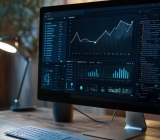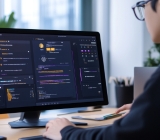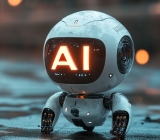WebGL-based Digital Twin Development Plan
Developing a WebGL-based digital twin project is a systematic undertaking involving multiple technical domains such as 3D graphics rendering, data processing, and real-time interaction. The entire process can be divided into the following key phases to ensure a clear structure and orderly progression.
1. Planning & Design Phase
This phase forms the project's foundation, determining the overall architecture and implementation path.
Req Analysis: Define the core application objectives of the digital twin. Is it for industrial equipment monitoring, process simulation, architectural visualization, or other real-time mapping and analysis scenarios?
Data Source Confirmation: Identify the physical objects to be modeled and their key parameters (e.g., temp, pressure, operational status), and determine data acquisition methods (real-time transmission or historical data retrieval).
Tech Stack Selection: Choose the appropriate WebGL framework based on project requirements. Common options include:
-
Three.js: Rich ecosystem, well-documented, suitable for building and interacting with most complex 3D scenes.
-
Babylon.js: Built-in powerful physics engine and XR support, more suited for gamified simulation and advanced interactive scenarios.
-
CesiumJS: Specializes in Geographic Info Systems (GIS) and large-scale terrain rendering, applicable for smart city or planetary-scale digital twins.
System Arch Design: Typically designed as a three-tier structure—data acquisition layer (e.g., IoT devices, PLC controllers), data processing & storage layer (servers & databases), and the front-end visualization & interaction layer (WebGL-based rendering and UI system).
2. 3D Modeling & Data Processing Phase
This phase focuses on converting real-world objects and their data into digital assets that can be rendered and used in the browser.
3D Modeling: Use tools like Blender, 3ds Max, or Rhino to build high-precision 3D models, optimized for the web environment including model decimation, material merging, and UV unwrapping.
Model Import & Integration: Import the optimized models in web-friendly formats (e.g., GLTF/GLB) into the selected WebGL engine, writing corresponding code to implement model loading and scene integration.
Building Data Pipeline: Establish a data transmission mechanism from the physical end to the front-end. Common solutions include real-time protocols like MQTT, WebSocket, or polling via REST API, with the backend responsible for data cleansing, aggregation, and pushing.
3. Front-end Dev & Interaction Implementation Phase
In this phase, the 3D scene, real-time data, and user interaction are integrated into a complete digital twin application.
Scene Setup: Configure the basic 3D scene, including camera, lighting, environmental effects, and skybox, to create a realistic virtual environment.
Data-Driven Visualization: Link incoming real-time data with model objects to enable status feedback. For example, adjusting model color based on equipment data, dynamically generating data charts, or driving animation effects.
Implementing Interactivity: A key环节 for enhancing user experience, including:
-
Camera Control: Support basic navigation operations like zoom, pan, and rotate.
-
Object Picking: Implement click-to-select model components, displaying relevant info panels or highlight status.
-
View Management: Provide human-computer interaction features such as level switching, visibility control, and animation playback.
4. Deployment & Maintenance Phase
Upon project completion, it needs to be deployed to the production environment and maintained for continuous operation and iteration.
Perf Optimization: Implement measures specific to WebGL apps, such as model LOD, texture compression, and rendering tuning. Use profiling tools (e.g., browser DevTools) to monitor frame rate and memory usage.
Cross-Platform Adaptation: Ensure the application functions and interacts correctly on mainstream browsers and different terminal devices (including mobile).
Deployment: Deploy the built front-end resources to a web server or CDN, configure the corresponding backend services and data interfaces, and complete the project release.
Ongoing Ops & Iteration: Digital twin systems often need updates alongside changing business requirements. Establish CI/CD mechanisms, regularly expand functionality, optimize experience, and adapt to new data sources or interaction needs.






